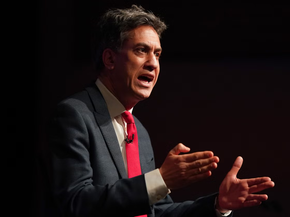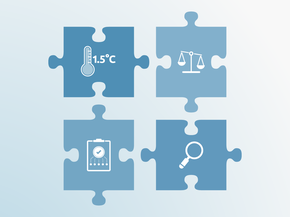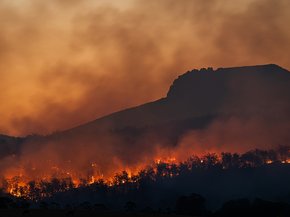Country summary
Overview
NDC update: In December 2020, Peru submitted a second NDC. Our analysis of its new target is here.
Peru was particularly hard hit by the pandemic, with one of the highest per capita fatality rates in the world and highest infection rates in South America. The pandemic and the associated economic crises in Peru will lead to a 10-13% reduction in projected emissions for 2030, compared to pre-COVID-19 projections. The government is currently revising its Paris Agreement 2030 target (NDC) and is considering a mid-century carbon neutrality target. Peru has signed a carbon credit agreement with Switzerland to finance emission reduction projects that should contribute to sustainable development in Peru, while the emissions cuts will count towards the Swiss NDC. This deal may ultimately make it more difficult for Peru to achieve its own mitigation targets. The CAT rates Peru’s current NDC as “Insufficient.”
At the time of publication of this report, Peru had just entered a period of political uncertainty, after its Congress voted to remove President Vizcarra in an impeachment trial. The abrupt replacement of the president by his follower, Manuel Merino, the face of a corrupt political class for millions of Peruvians, sparked large pro-democracy demonstrations across the country. Merino stepped down after only six days amid nationwide fury over the killing of two protesters in violent clashes between police and protesters. On Monday, November 16, the Congress elected Francisco Sagasti as new interim president, Peru’s third president in a week, until national elections are held in April 2021. The local currency hit an 18-year low that week, threatening the country’s recovery from the pandemic as well as bringing uncertainty to any plans to implement further, more ambitious climate policies.
According to our assessment, Peru’s emissions (excl. LULUCF) in 2020 would be 14% to 16% lower than in 2019. This can be attributed to the strict and long, four-month lockdown period. The COVID-19 pandemic and the complete immobilisation of the population also resulted in one of the most dramatic economic downturns in the world, with a devastating 30.2% GDP drop in the second quarter of 2020, with annual 2020 GDP growth projected to fall between 12% and 13.9% Although the government’s response to the pandemic has so far mainly taken the form of financial bailouts, its representatives have in several instances referred to a ‘building back better’ approach, taking into account sustainability and responding to climate change.
Amongst the most relevant climate policy developments, in May this year, the government approved the National Programme for Sustainable Urban Transport, which supports cities in developing cycling infrastructure, referred to as low-emissions and low-risk mode of transport.
In July, Peru established its high-level climate change committee to signal its commitment to fighting climate change. In September the country received a EUR 250 million loan from the KfW Development Bank that will help small businesses survive the current economic crisis and, once economic recovery begins, will be used to promote climate-friendly investments.
In October, Peru and Switzerland signed a carbon credit deal where Switzerland will finance emission reduction projects that are designed to contribute to sustainable development in Peru while the emissions reductions would count towards the Swiss NDC. This poses a major risk for Peru in the long-term, as achieving further mitigation reductions in the future (as needed under the Paris Agreement) will become much harder.
Peru is currently revising its NDC target and has announced it will move from a 30% to a 35% reduction of total emissions in its next NDC, while also aiming for carbon neutrality by 2050. There is limited information available on the sectoral contribution to the 2030 target, but assuming a similar share of the LULUCF sector to the overall reduction as in the current NDC, we predict the 35% target will also be met with current policies. This highlights an opportunity for Peru to become a frontrunner in the climate sphere by setting up more ambitious targets that are both realistic and in line with the temperature goals of the Paris Agreement.
The CAT rates Peru’s NDC targets “Insufficient.” The “Insufficient” rating means that Peru’s climate commitment is at the least stringent end of what would be a fair share of global effort and is not consistent with the Paris Agreement’s 1.5°C limit, unless other countries make much deeper reductions and comparably greater effort.


According to our calculations, national emissions will experience a 14% to16% drop in 2020 below 2019 levels as a consequence of the pandemic, which then leads to emission levels of 110-113 MtCO2e, excl. LULUCF, by 2030. This represents a 10–13% reduction, compared to pre-COVID-19 levels. According to our calculations, Peru will overachieve both its unconditional and conditional 2030 targets under current policies scenario.
Other relevant developments include the approval of the regulation of the framework law on climate change at the end of 2019, making the NDC legally binding, and the establishment of a high-level climate change committee in July 2020 (Ministry of Environment of Peru, 2020b; SINIA, 2020). In the transport sector, the government set tax incentives to promote the acquisition of hybrid or electric vehicles by an accelerated depreciation rate and is currently supporting cities develop cycling infrastructure under the National Programme for Sustainable Urban Transport. In the Forestry sector, the government recently extended the National Forest Conservation Programme for ten more years and has set the target of protecting 10 million forest hectares by 2030, which will reduce current deforestation rates by 30%.
Peru has been particularly hard hit by the pandemic, it had one of the highest per capita fatality rates in the world and the highest infection rate in South America. Peru’s GDP dropped by 30.2% in the second quarter of 2020, and it expects an average annual drop of 12.0% – 13.9% due to COVID-19. Government representatives have in several instances referred to a ‘building back better’ approach, taking into account sustainability and responding to climate change. In this context, Peru received a EUR 250 million loan from the KfW Development Bank to help small businesses and their employees to survive the current economic crisis and, once the economy begins to recover, the funds will be used to promote climate-friendly investments.
Further analysis
Latest publications
Stay informed
Subscribe to our newsletter






